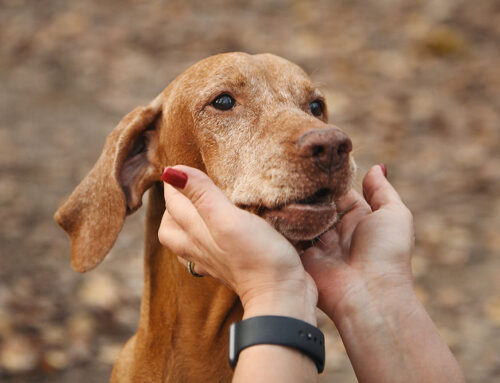A man walks into a bar with his dog and tells the bartender the dog will talk if his owner gets a free drink. The bartender gives him a shot.
The man asks the dog, “What does sandpaper feel like?” The dog answers, “Ruff!” The bartender shakes his head and says, “Come on, that’s just a bark,” but he gives the man another drink and the dog another chance. The man asks his pet, “What’s that thing over our heads?” and the dog replies, “Roof!”
The bartender is getting tired of this, but agrees to give the duo a last chance. So, the man asks the dog, “Who’s the greatest baseball player of all time?” The dog wags his tail and says, “Ruth!” The bartender throws the pair out on the street.
As the door slams behind them, the dog looks up at the man sadly and says, “Sorry, boss. Maybe I shoulda said DiMaggio.”
Dogs bark to express themselves using their own language. To people who don’t understand dogs’ vocalizations, whatever their four-legged friend says will always be just a bark. Fortunately, with some canine communication experts’ help, you can learn to interpret your dog’s language and enhance your rapport with your pet. To help you understand what your dog is trying to communicate, our Midtown Veterinary Hospital team explains why dogs bark.
Communicating with your dog is a two-way street
Just like the dialog between veterinary teams and their clients, dog-owner communication needs to be a two-way street to be effective. Stephanie Gibeault, a certified professional dog trainer, points out that while pet owners may invest considerable time and energy into training their dogs to understand them, they don’t always make an equal effort to understand their dogs.
Gibeault shares some insights from Dr. Stanley Coren‘s book, “How to Speak Dog: Mastering the Art of Dog-Human Communication,” which explains that interpreting dogs’ barks and other vocal signals is a complex matter. Depending on the situation, your dog expresses a range of moods, including excitement, fright, loneliness, surprise, and irritation.
You need to pay attention to the pitch of your dog’s voice and the space between sounds, too. A low, rumbling bark indicates a serious dog trying to tell you something important. On the other paw, a happy dog enjoying playtime expresses joy with a high-pitched bark. Think about the sounds your dog makes to welcome you home versus the warning barks they make when a stranger approaches your door. A long series of barks suggest aggression, but spaced-out, plaintive sounds probably mean the dog is lonely.
7 types of barks and what they mean

Dogs bark to communicate emotions and physical signs. Monica Tarantino, DVM, a small animal veterinarian and pet owner educator, shares seven common reasons why dogs bark:
- Excitement — Your dog is likely to give you a high-pitched or midrange bark, along with enthusiastic tail wags, when you come home from work or get the leash out before a walk.
- Seeking food or attention — When your dog wants something, such as food, treats, cuddles, or exercise, they’ll let out a long series of single barks with pauses between them.
- Boredom — A bored dog may “harrr-ruff” to invite you to play. Barks such as these are lower-pitched and uttered one at a time. If you don’t get the hint, your pet may bring you a toy or adopt a playful posture.
- Fear, anxiety, or a territorial dispute — A dog getting ready for fight or flight may signal their distress with a deep bark and possibly a growl. They won’t let up until you get the idea that there’s a problem the two of you need to solve.
- Pain — Dogs in pain bark to call for help. You may hear this type of bark—a high-pitched, staccato sound that trails off at the end—such as experiencing an injury during rough play or being attacked by another animal. If your dog barks like this when you’re simply touching them, call our Midtown Veterinary Hospital team.
- Surprise — When dogs are surprised or startled, they often give a single, high-pitched bark as if to say, “What the heck?” This is an involuntary response to something they weren’t expecting.
- Cognitive dysfunction — An older dog with cognitive dysfunction may bark at something that, as far as you can tell, isn’t there. If your elderly dog barks into a corner or at a wall during the night, ask our veterinarian what you can do to comfort them.
Our veterinary team wants to communicate as effectively as possible with you and your pet. We offer many services to help resolve your furry pal’s emotional and physical issues. In addition, we prioritize prevention, using routine wellness examinations and lab work to identify minor problems and address them before they can progress to severe issues.
Our Midtown Veterinary Hospital team wants to know what’s on your mind as well as what’s on your pet’s mind, so we’re committed to keeping the communication channels open. We welcome your comments, barks, and meows anytime. Schedule your pet’s preventive care appointment with our Midtown Veterinary Hospital team.






Leave A Comment